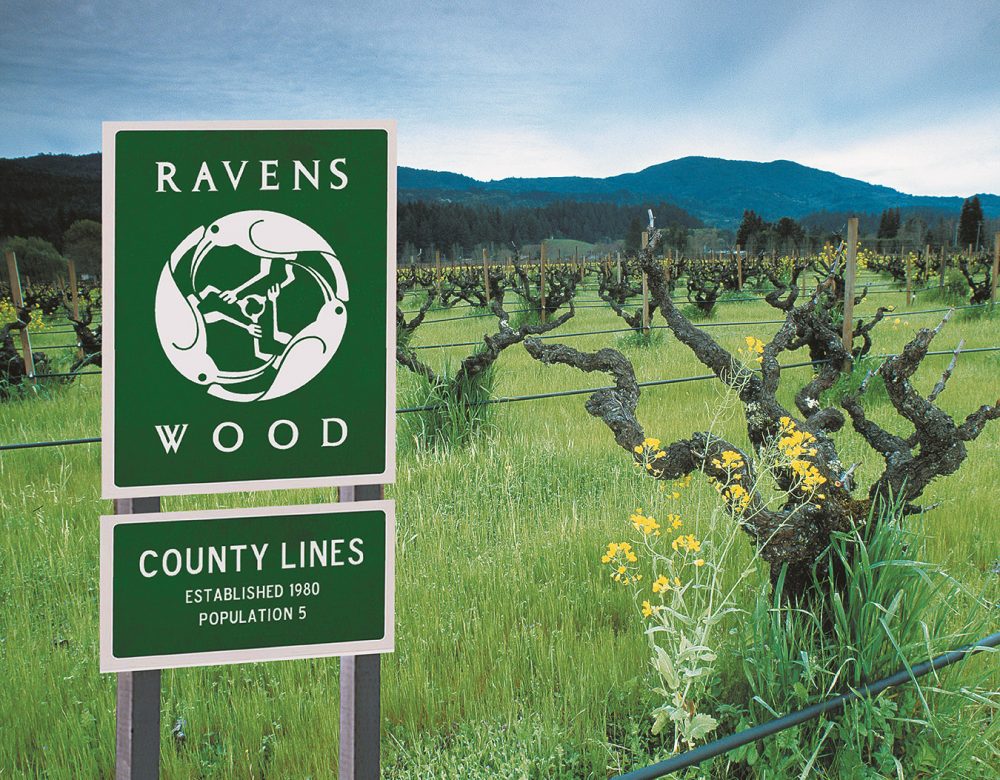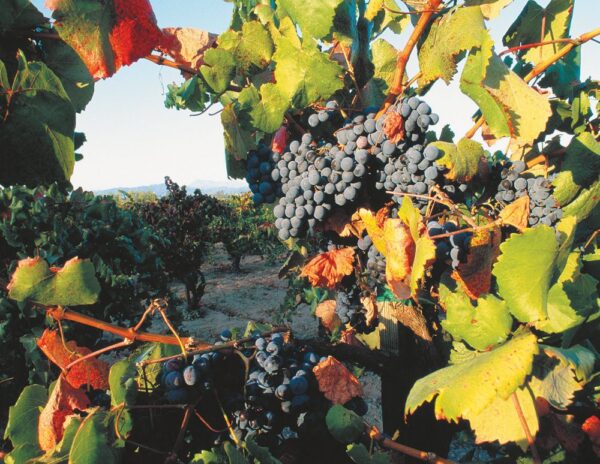One of the better badges handed around at various wine festivals and tastings across North America is that for Ravenswood Winery. It has the stylized raven logo, but surrounding that is the phrase “No Wimpy Wines”. Ravenswood founder and still, for all of its nearly 30 years, chief winemaker Joel Peterson smiles and says, “It pretty much captures what we’ve wanted all along.”
Sonoma County has a myriad of wineries, wine varieties and styles. Pinot noir and chardonnay tend to thrive here, but so too does zinfandel—a grape that lends itself to a bewildering array of styles, from light and fruity, nearly house Beaujolais wines, all the way through to brooding monsters born of fruit taken in small yields from ancient, stooped and gnarly vines. Peterson has, from day one, approached this with two things in mind. “I knew I wanted the wine to have some typicity of the place it comes from,” he says. “But I also wanted Ravenswood to have a classical, almost European type of structure—and elegant, powerful zinfandel.”
Peterson has learned how to find grapes from places like Mendocino and Lodi for his wines, but it took a while. In the old days, no one believed Lodi could grow wines of any structure or breeding. It is completely flat, that is true, but within vineyards, even within single rows in vineyards, you can find some excellent fruit. “I spend a lot of time doing blind tastings with our various growers, putting their own wine up against two or three others, and letting them taste for themselves. This way, each grower is encouraged to get better. It has helped everyone over the long term,” Peterson says.
The entry level wine, called simply Vintner’s Blend, is approachable, and easy to like. There is a zinfandel, and even a petite sirah in the line. The winery produces some cabernet sauvignon and even a little chardonnay as well. There are county-specific zinfandels as well, from Sonoma and Lodi. But the point of pride is predominantly the lineup of single vineyard zinfandels.
Zinfandel is not an easily identifiable variety, and even the same winemaker will achieve wildly different results based on the growing areas the wine comes from. But for Joel Peterson, the point has always been to make “a European style of wine. Plenty of structure and balance. Not those massively alcoholic fruit bombs that came into favour a few years back.” So, a Ravenswood zinfandel combines the raw power of the variety, at least when grown on old vines, with a certain elegance and plenty of structure, top to bottom. They can be spicy, full of brambleberry and even raspberry notes, or they can be of chocolate and leather and dark purple plums. In any case, they always show depth and approachability, while maintaining a certain amount of ageability in bottle.
Peterson, the son of two chemists, was working at a San Francisco hospital laboratory when he decided to follow the wine muse. Not incidentally, his father was an avid wine enthusiast, and his mother was a collaborator on Alice Waters’s now-iconic Chez Panisse cookbook. He has, since that fateful day, pursued his dream (“I was in this gigantic lab, all alone, and realized I did not want to spend the rest of my life doing medical research. It wasn’t quite right for me”), and by any standard has done well. He pours his wine for avid fans at a tasting booth, smiles and says, “It is a demanding job, but there’s nothing I would rather do.”










